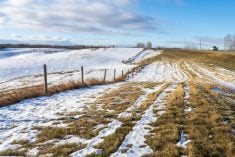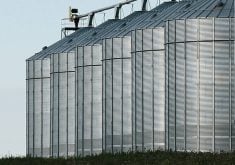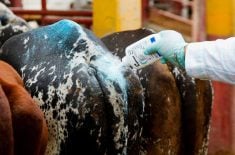Amidst all the noise surrounding Ontario’s decision to reduce the use of neonicotinoid seed treatments by 80 percent, Health Canada quietly released an update on its research into neonic insecticides and bee health yesterday.
The Pest Management Regulatory Agency said Canadian beekeepers reported fewer bee deaths in 2014 compared to previous years, but Health Canada scientists are concerned about reports of poor bee colony health in the later stages of summer.
The PMRA issued the report on the same day that Ontario announced its plan to significantly cut the acreage of corn and soybeans in the province that is planted with neonicotinoid coated seed. Ontario’s minister of agriculture and minister of the environment said the 80 percent reduction is needed to protect pollinators and the broader environment from this dangerous “neurotoxin.”
Read Also

Beijing lifts some tariffs on U.S. farm goods but soybeans stay costly
China will suspend retaliatory tariffs on U.S. imports, including duties on farm goods, after last week’s meeting of the two countries’ leaders, Beijing confirmed on Wednesday, but imports of U.S. soybeans still face a 13 per cent tariff.
In its report, the PMRA reiterated previous findings that insecticide-laden dust from seed treated with neonicotinoids, such as imidacloprid, clothianidin and thiamethoxam, did cause bee deaths across Ontario during corn and soybean planting in 2012 and 2013.
But reports of bee deaths at seeding time were much lower this spring.
Apiarists reported less than 50 incidents from bee yards in 2014, compared to more than 200 reports from bee yards in 2012 and 2013.
The PMRA said cooler spring weather and later planting dates this year contributed to the reduction in dead bee reports.
The improvement may also be related to new seed treatment rules, instituted this year, where corn and soybean seeds must have a “fluency agent” that reduces the dust emissions from a planter.
The reduction in bee deaths at planting time is encouraging, but more Canadian beekeepers are reporting problems with their hives later in the summer:
• In August 2012, no beekeepers reported bee incidents at their bee yards
• In August 2013, 21 beekeepers reported incidents at 91 bee yards
• In August 2014, 27 beekeepers reported incidents at 184 bee yards
Most of the August reports focused on colony health. The beekeepers said their hives lacked foragers and had lower populations, while honey production was reduced.
“At this time, Health Canada’s PMRA does not have sufficient information to draw conclusions regarding a link between these colony effects and potential neonicotinoid exposure,” the PMRA said in its neonic and bee health update.
“The available science indicates pollinator effects can result from sub-lethal exposure to neonicotinoids, but no conclusions can be drawn that actual environmental exposures from some uses are at levels that may result in effects. More work is needed in this area.”
Other highlights from the report:
• In May, April and June of 2012, 23 beekeepers reported bee incidents at 238 bee yards.
• In May, April and June of 2013, 62 apiarists reported bee incidents at 265 bee yards.
• In May, April and June of 2014, 43 apiarists reported bee incidents at 82 bee yards.
• The 2012 reports featured high numbers of dead bees and clear signs of poisoning, including twitching and paralysis.
• The number of dead bees, per report, was much lower in 2013.
• The PMRA said the neonics are less of a risk to mammals than previously used pesticides. No human health concerns have been identified with the use of neonicotinoids to date.
• The PMRA is continuing its re-evaluation of this class of pesticides. It expects to release an interim report on that work in 2015.















